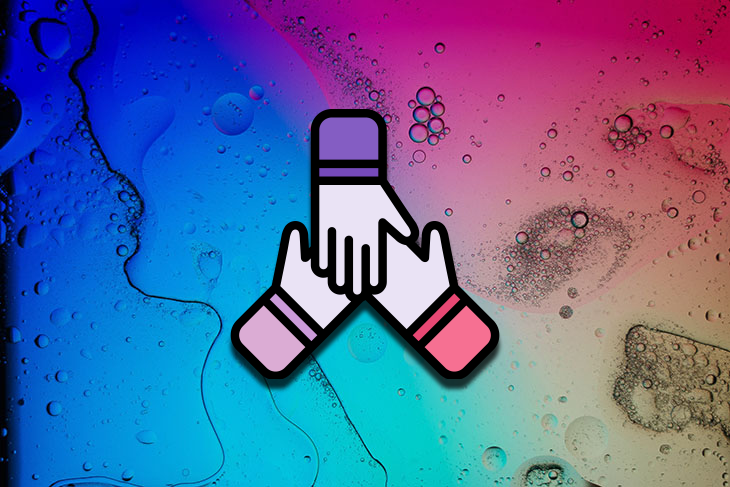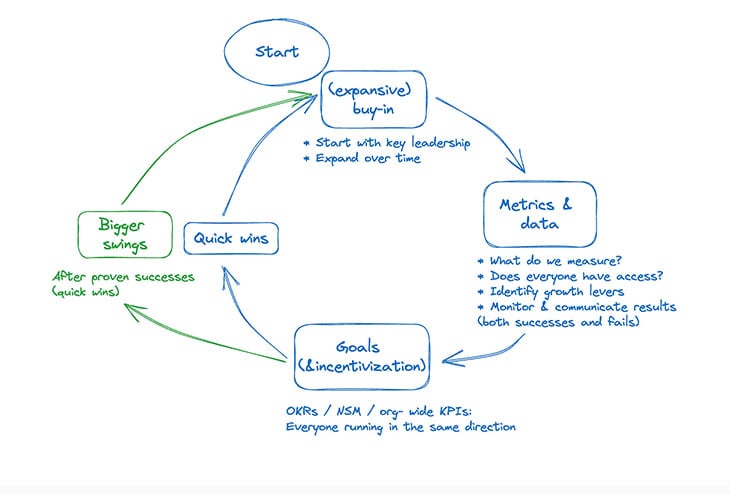Most tech companies love the idea of rapid-fire experimentation. We’ve all read Sean Ellis’ Hacking Growth, and we’ve collectively been inspired by the stories of unicorns like Airbnb, DropBox, and Pinterest. But a lot of great product, marketing, and growth talents are working in environments that operate quite differently.

Because experimentation isn’t for the faint at heart.
It means doing bold, sometimes risky things to maximize learning. It means some successes but also lots of failures. As per the definition, experimentation clashes with incremental growth. If you want KPIs to go up at all times, then experimentation isn’t for you.
This also means that fostering an experimentation culture tends to be a lot harder for bootstrapped companies — who need revenue to keep the lights on — than for VC-backed companies who can afford to take the risk.
But if you’re looking for a fundamental breakthrough, and have an aching to create something drastically better, then this one’s for you.
It’s easy to echo the theory from the books:
But most of us are familiar with a different picture.
The first revolves around leadership buy-in. “Sure experimentation is fine, as long as every experiment is a success” simply won’t do.
There’s also usually a struggle and a lack of (organization-wide) clarity on the target audience — i.e., it’s not specific or narrow enough. If you’re not clear on who it’s for, you’re going to build a mediocre product that’s kind of okay for anyone. Bloat is given, leading to the next point.
How about the actual capacity of the tech team? 80 percent of the tech team’s time goes into maintaining the product, leaving a meager 20 percent for experimentation. These organizations are not gonna build a rocket ship — there might be small, incremental progress, but no breakthrough inflection points. For early-stage startups, those numbers should be flipped around.
Remember what I said about metrics and data? The reality is, a lot of the time there are no company-level goals or OKRs, and there’s a lack of clarity on which metrics matter. Sometimes product or growth teams aren’t able to measure success. Product analytics is missing entirely or the team needs to harass the data team for answers.
Departmental silos are another common problem, which is an issue for one million reasons. If marketing and/or sales are selling to a different audience than for whom the product and dev teams are building for, experiments are doomed to fail.
Finally, there’s sometimes a lack of expertise. This includes the organization simply not knowing how to run experiments, which levers to pull, how to identify the metrics that matter, how to set the right success metrics, etc.
If any of those above realities sound familiar to you, you might wonder how it’s possible to build a culture of experimentation with all of those roadblocks. Well, it’s possible:

No matter how talented you are, you’ll never change your company culture on your own. You’re asking your organization to start taking greater risks for greater returns and to prioritize learning over shipping, and you’ll need resources, for example, marketing, design, engineering, and product.
Without initial buy-in from key leadership figures, you won’t get anywhere.
After kicking off, you’ll hopefully be able to deliver some quick wins to win over the hearts and minds of the non-believers. This is what I mean by “expansive” buy-in. The more you prove, the more people you’ll be able to bring on board.
It’s difficult to argue against gut feelings or work in a “loudest voice wins” environment if you don’t have any data to back up your argument.
It’s impossible to know where to start working and which lever to prioritize without data.
This goes hand-in-hand with #1: buy-in. Learning needs to be prioritized over small, incremental gains, and goals and incentivization need to reflect that.
There are better, more strategic ways to align your goals and create incentives, including:
It’s imperative to communicate openly about both failures and successes. Make sure that everyone can stay informed of what is happening and can ask questions or voice concerns. A simple step is to create a dedicated Slack channel with regular updates on what experiments you’re running and how things are going, always pointing back to the data supporting your hypotheses and findings. Share your learnings with anyone who will listen.
Invite others into the process. Communicating with people is one thing, but co-creation is the next level. When the time is right, open up your idea pipeline to other departments (and possibly even to customers and partners).
You’ve got a lot to prove, so better get on that right away. Identify your low-hanging fruits and go for them right out of the gate.
Simple ways to get started:
As Maja Voje says, “Even a half-win is fine at first. Anything that gives you and the team a strong signal that you’re on the right path is a cause for celebration.”
Increase the risk (and corresponding potential gain) as you progress. Strive for quick wins to win over the hearts and minds of more and more team members, and go for the bigger swings later on.
You can’t take a sledgehammer to an organization and recreate it in the shape you like.
Pace yourself, get buy-in, and rebuild together, brick by brick.
Featured image source: IconScout
LogRocket identifies friction points in the user experience so you can make informed decisions about product and design changes that must happen to hit your goals.
With LogRocket, you can understand the scope of the issues affecting your product and prioritize the changes that need to be made. LogRocket simplifies workflows by allowing Engineering, Product, UX, and Design teams to work from the same data as you, eliminating any confusion about what needs to be done.
Get your teams on the same page — try LogRocket today.

Great product managers spot change early. Discover how to pivot your product strategy before it’s too late.

Thach Nguyen, Senior Director of Product Management — STEPS at Stewart Title, emphasizes candid moments and human error in the age of AI.

Guard your focus, not just your time. Learn tactics to protect attention, cut noise, and do deep work that actually moves the roadmap.

Rumana Hafesjee talks about the evolving role of the product executive in today’s “great hesitation,” explores reinventing yourself as a leader, the benefits of fractional leadership, and more.